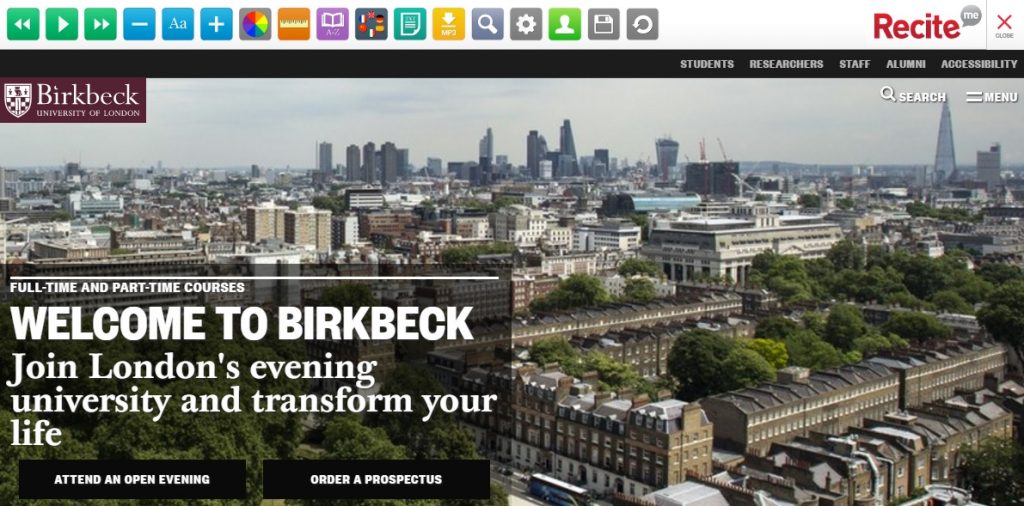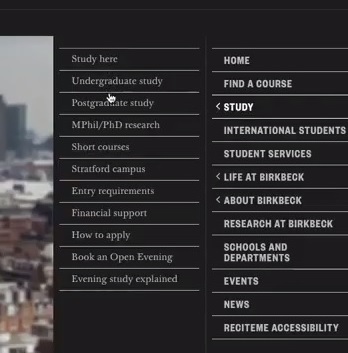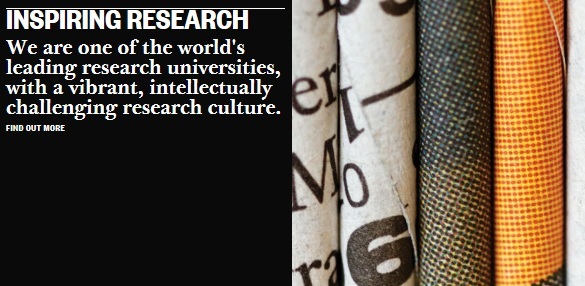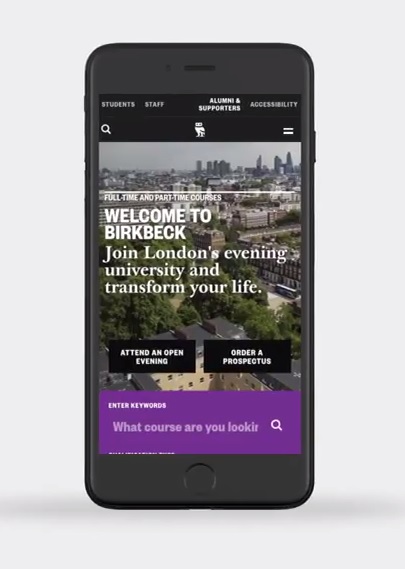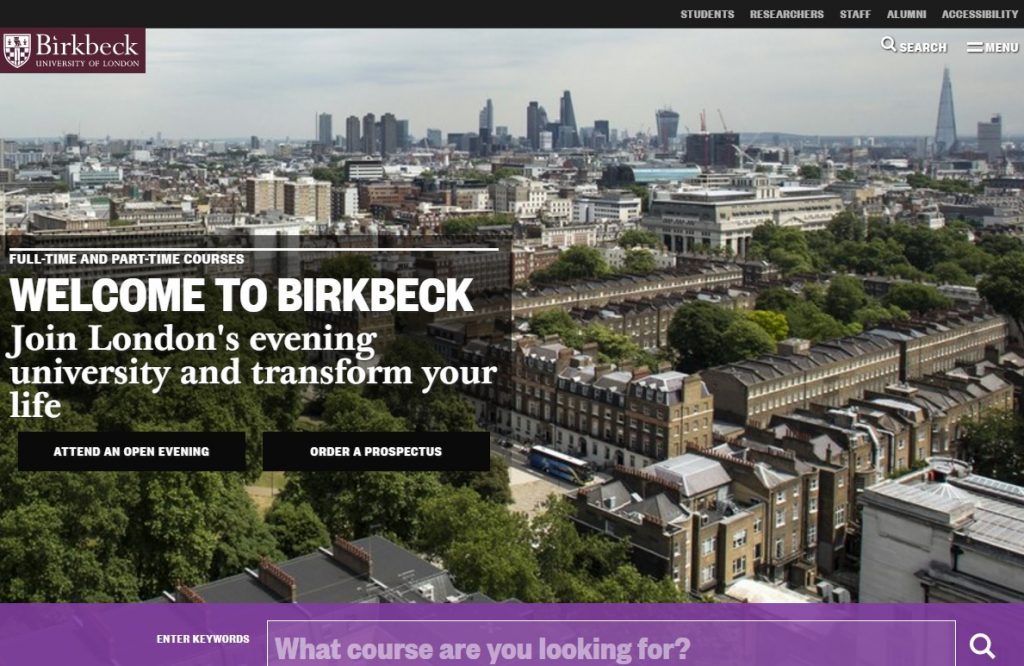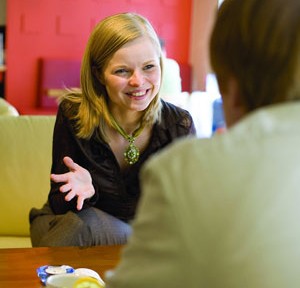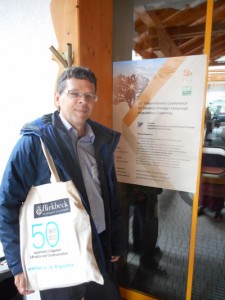Every year, the Birkbeck Institute for the Humanities (BIH) runs the London Critical Theory Summer School (LCTSS). In this blog, participants from this and previous year’s Summer School share their experiences and its impact on their work and lives.
What the participants said:
Jessica Nogueira Varela – Phd Candidate, Cornell University, Ithaca, US / Central European University, Vienna, Austria; originally from Brazil
Weeks have passed since the summer school ended, and I still cannot help but wish to live it all over again. I am confident that I benefitted from attending LCTSS from a professional, academic, and personal perspective, which is why I am incredibly grateful for the generous grant offered through the OSUN network, without which I wouldn’t have been able to attend at all. The whole thing was thought-provoking, with excellent lecturers and experts. Likewise, I was captivated by the generative and insightful exchanges the organizers allowed through tea breaks and small group discussions.
I had the privilege of attending lectures with speakers I never dreamt of meeting in person, in addition to conversing with and learning from my peers. Each lecture was filled with questions relevant to our current context: we touched upon the psychological effects of war, the expanding borders of Fortress Europe and the imperial US into the global south, the long-durée of capitalist exploitation and the war on drugs, and the environmental catastrophe in relation to other catastrophes (military, technological).
We questioned what critical theory is, what its role should have, and what it can do in the world. By thinking through contemporary problems, we were invited to reconsider the role of the aesthetic within legal systems, the effects of archives, the humanitarian crises across the Global South Global North, and the challenges intersectional feminist solidarities pose to the current state of affairs.
By having smaller group discussions with my peers about these issues, and many more, we learned from one another’s perceptions of the day while deeply considering ways to address the issues presented. Granted, we often left with more questions than answers, but I was touched by the entirety of the experience because of the interdisciplinarity embedded in the program and the expertise of the cohort.
For example, through the practical and theoretical approaches brought by lecturers Sisonke Msimang and Kojo Koram, our group discussions ventured into the importance of historical contextualization vis-a-vis capitalist exploitation and anti-black racism. We were positioned to reconsider the very premise and design of our institutions, academic fields, and activism.
Overall, I believe the summer school provided the attendees with some of the most useful theoretical and practical frameworks we could have had access to, while also giving us the space for our thoughts and feelings to autonomously grow as we listened to and learned from each other. I am aware of how much work there is to do, but I am also encouraged by how many of us understand critical theory as a theory and practice of transformation, enabling us to act in the world and fail better.
Israr Hasan – BRAC University James P. Grant School of Public Health, Bangladesh
It was a fantastic opportunity to have been a recipient of the OSUN bursary. As someone who lives and works in the Global South, the bursary paved an opportune moment for me to meet with fellow students and learners from across the world and be acquainted with stellar intellectuals like Jacqueline Rose, Esther Leslie, Stephen Frosh, Slavoj Zizek, Eyal Weiszman and many others.
Conversations with them had a healthy current of agreement and disagreement, which has strongly influenced my way of thinking about the world we live in and the multipolarity of crises that take place in the realm of nationalism, gender rights, violence, and justice.
I am grateful for the gift of learning bestowed upon me by my fellow teachers and classmates, who have helped me navigate a new understanding of being attentive and observant of various problems plaguing our world. The debates and discussions were fruitful and emotionally charged yet civil in allowing us to express ourselves and come to terms with ideas that seemed “foreign” and “taboo” in our respective countries. In the end, the summer school has armed me with the know-how of various topics that I hope to integrate into my mode of thinking, translating into the broader scheme of action I will undertake.
Yara Malka – American University of Beirut, Lebanon
Receiving the OSUN bursary for the Birkbeck’s Critical Theory Summer School 2020 was a formative and life-changing experience for me in many ways. One of them was academic. With Dr. Jacqueline Rose, Dr. Elia Ntaousani and Dr. Esther Leslie spearheading a challenging and intense schedule, I felt I was privileged and lucky to be under their wing.
Every day was a milestone, and the speakers exceeded my expectations. I learned more about my initial fields of interest, critical theory and psychoanalysis, straight from the academics who have always inspired me from afar. I do not know how to describe the feeling of meeting your academic idols and learning from them firsthand; it truly made me speechless. I was also exposed to new conceptual tools which I find myself using in my thesis now. This includes forensic architecture as a new theoretical foundation for my work.
On a personal level, this opportunity is one which I could only dream of as a Lebanese citizen, so it was literally a dream come true. In only two weeks, I noticed a spike in my learning curve on both professional and personal levels. The exposure to great intellectuals from different parts of the world, be it the participants, speakers, or coordinators has been an exercise in building character. Thank you endlessly for this experience.
A special thanks goes to the directors and staff for working so hard in an effort which I witnessed every second of this program without fail. I am grateful and I hope this opportunity will reach more academics from my country because the potential is endless, particularly if the conversation includes Lebanon.
Mustafa Mayar, Bard College Berlin, Germany; originally from Afghanistan
Ever since leaving Afghanistan due to the Taliban takeover of the country and studying in Germany, attending the London Critical Theory Summer School at Birkbeck has been one of the highlights of my academic life. This remarkable experience introduced me to scholars who delved into subjects and theories previously unfamiliar to me, leaving an indelible mark on my intellectual growth.
One topic that stood out was forensic architecture and its significance in democratizing physical spaces. Listening to Eyal Weizman and Christina Varvia elucidate the ways digital tools unveil how current power systems perpetuate the subjugation of marginalized communities was genuinely captivating. Equally profound was Stephen Frosh’s seminar, where the firsthand accounts of Ukrainian teenagers detailing their experiences of war opened my eyes and stirred deep emotions.
Joining the summer school with limited knowledge of critical theory’s application to real-world issues, I left with a profound shift in my approach to social justice and a renewed understanding of our role in effecting positive change. I now recognize the intricate interconnectedness of various social issues and the necessity of considering intersectionality when addressing them.
Yet, beyond the academic voyage I embarked upon, the impact of connecting with fellow participants and immersing myself in their stories from different corners of the world was transformative. During a break, I engaged in conversation with a participant who seemed to be in their late twenties, and they shared their research topic for a Ph.D. with me. This encounter shattered my preconceived notions, as I had previously associated doctoral pursuits with seasoned professors in their fifties. It made me realize that age is not a barrier to achieving greatness within one’s academic field. This revelation instilled in me a sense of liberation, allowing me to recognize the immense potential within myself to make a meaningful impact and exceed the limits I had unknowingly placed upon my aspirations.
Inspired by the London Critical Theory Summer School, I now embrace the true value of my potential, driven to achieve more in life and leave a positive imprint on those around me.
Aigerim Azimova, Central European University, Austria; originally from Kyrgyzstan
I am immensely grateful to have been selected as one of the recipients of the OSUN bursary, granting me the opportunity to participate in an exceptional and highly esteemed summer school in Critical Theory. I would like to express my deepest appreciation to the Birkbeck Institute of Humanities, particularly Co-directors Jacqueline Rose and Esther Leslie, as well as Manager Elia Ntaousani, for their exceptional organization and the wonderful spirit they fostered throughout the unforgettable two weeks.
It is difficult to adequately articulate just how much I gained from this summer school experience. The London Critical Theory Summer School has undeniably expanded my critical thinking skills and will undoubtedly prove to be an invaluable asset in my professional journey. Coming from a legal background with a focus on human rights and criminal justice, I found the exploration of investigative aesthetics particularly captivating. Given my involvement in torture consideration cases during my past work experience and the inherent challenges of proving such claims, I see this field very compelling in the pursuit of justice.
I extend my heartfelt gratitude to all the esteemed speakers who contributed to the event. Each of them left an indelible mark on my mind, provoking profound thoughts and reflections. Additionally, I am grateful for the opportunity to connect with a diverse and brilliant cohort of participants from across the globe. Engaging with like-minded individuals has truly broadened my horizons and enriched my perspective.
No words can express the depth of my gratitude for this remarkable opportunity in my life. The OSUN bursary and the Critical Theory Summer School have had a marked impact on me, and I am honoured to have been a part of it.



